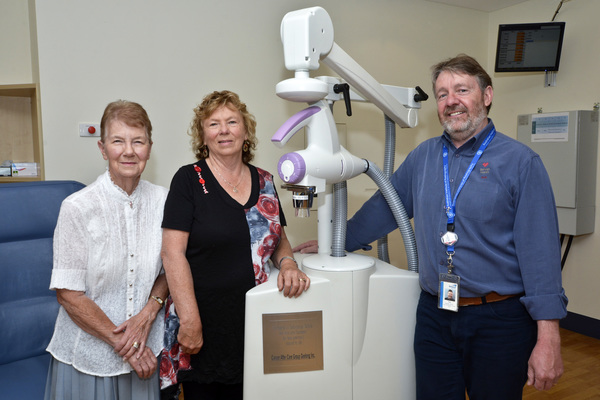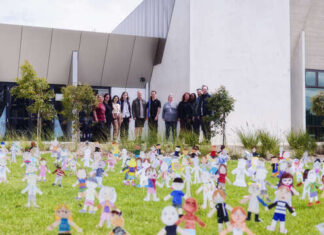
By ALANA MITCHELSON
A new radiotherapy machine is saving Geelong skin cancer victims from surgery thanks to the fundraising efforts of volunteers.
Cancer After Care Group Geelong raised $218,000 to buy the state-of-the-art technology for Andrew Love Cancer Centre.
The machine has performed 80 treatments for 14 patients in the past three months.
Geelong hospital previously lacked technology to precisely treat localised skin cancers, often in delicate areas such as the nose, eyes, ears and mouth, without requiring surgery.
The technology uses low-energy X-rays in a focused beam to concentrate on the affected area.
The radiation penetrates only the surface layer of skin, between 2mm to 5mm depending on the dose.
The less-invasive procedure reduces scarring because it avoids deeper tissues and also minimises damage to surrounding healthy cells.
Andrew Love radiation therapist Paul Foulstone said the equipment was previously inaccessible to the centre due to its high cost.
“The only similar machine in Geelong was an old device used by a private specialist that was due to be withdrawn from service and was not going to be replaced,” he said.
“Equipment like this becomes important when surgery isn’t an option. For example, the patient may be elderly or have a bleeding problem.
“Previously what we call local skin cancers that fall under this scenario have been untreatable here.
“We’ve had to refer people to Melbourne. The hospital in Ballarat might be the closest machine.”
Mr Foulstone said demand for the treatment was high, with Ballarat treating about 500 patients a year.
“It’s an option that many people may not know about, so we want to spread the word that patients can now be treated locally.”
Cancer After Care Group president Libby Bate said the organisation had been accumulating the money over many years.
“We had actually been saving up for a brachytherapy machine worth over $1 million but by the time we’d raised the funds after 10 years of hard work the technology had been superseded.
“So we suddenly had all of these funds to look at alternative ways we could help cancer patients in the community. There was definitely a demand for this kind of a machine in Geelong.”
The treatment typically involves 12 two-minute sessions, on average, over two and a half weeks.
Different sized lead shields tensure the radiation pinpoints the affected area and protects surrounding cells.
Mr Foulstone said the machine would help his team treat cancers on or around the face, which could be difficult to remove surgically without significant scarring.
“After surgery there’s a chance the cancer will grow back and if it comes back it gets more difficult to operate because each time we have to also remove a margin surrounding the affected area to prevent the cancer from spreading.
“This technology pinpoints the exact area affected. It’s instantaneous, the paient doesn’t feel anything and the only side effects are a little bit of burning.”






